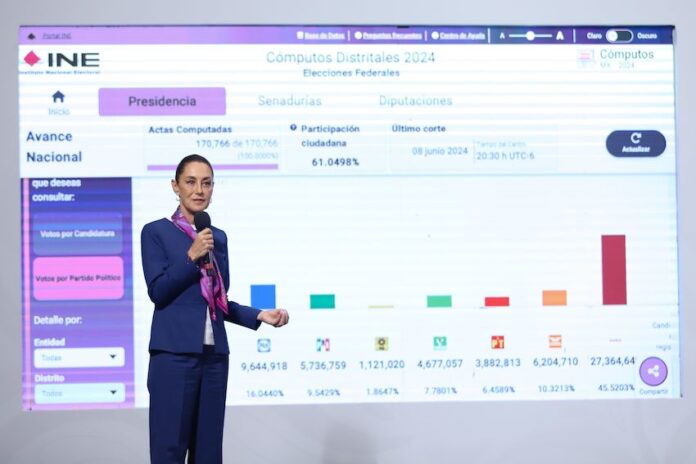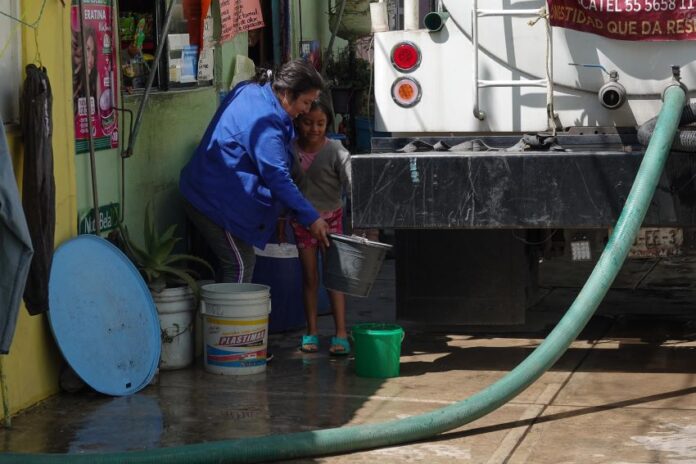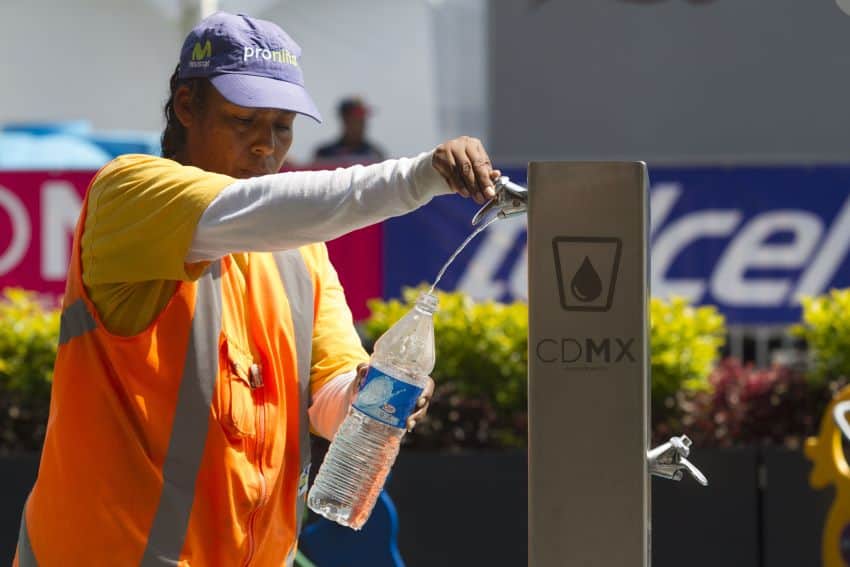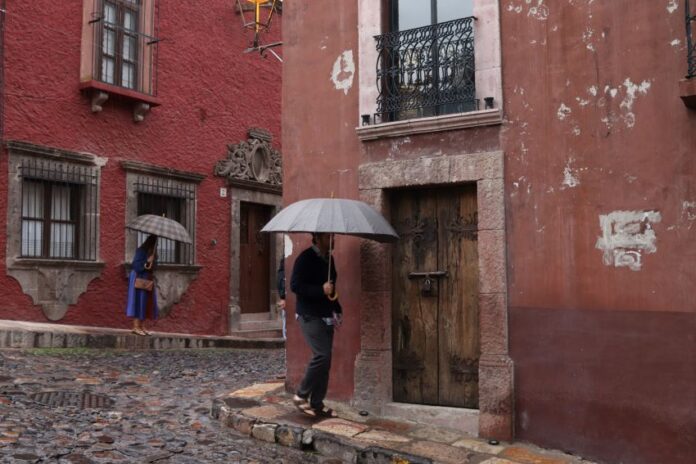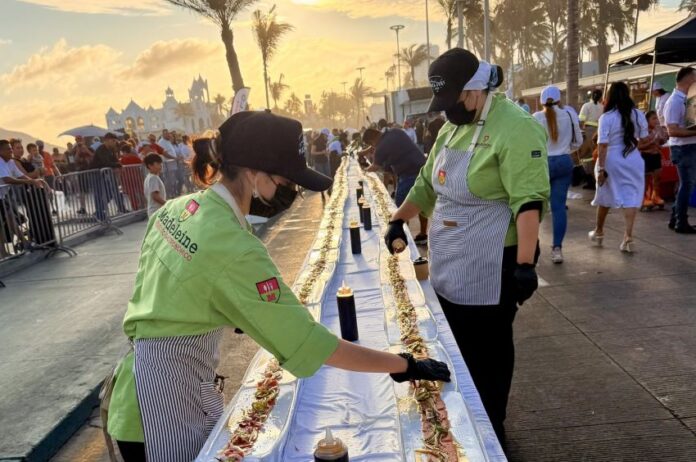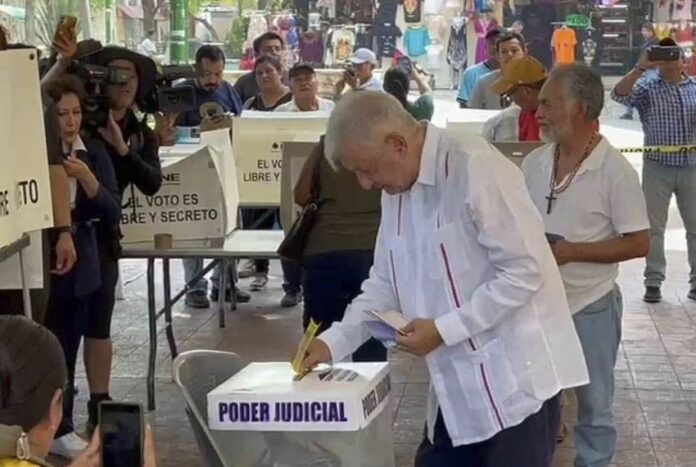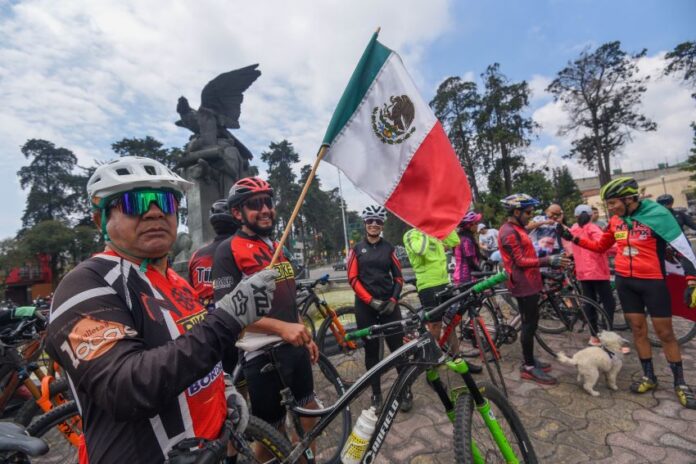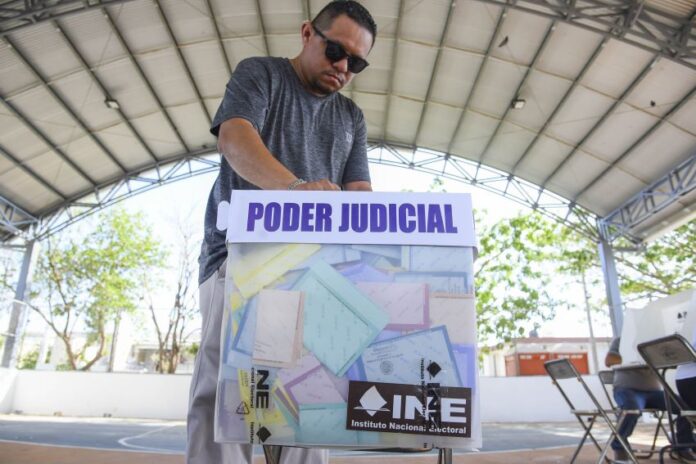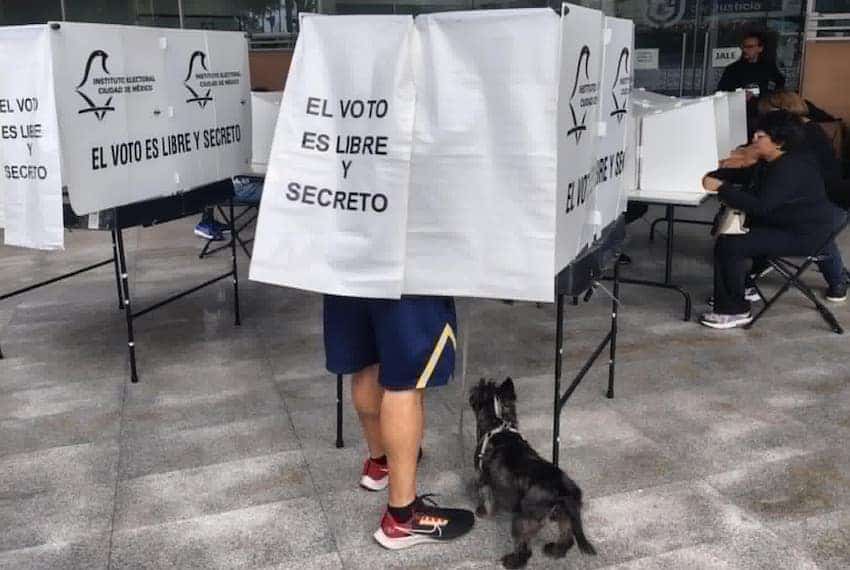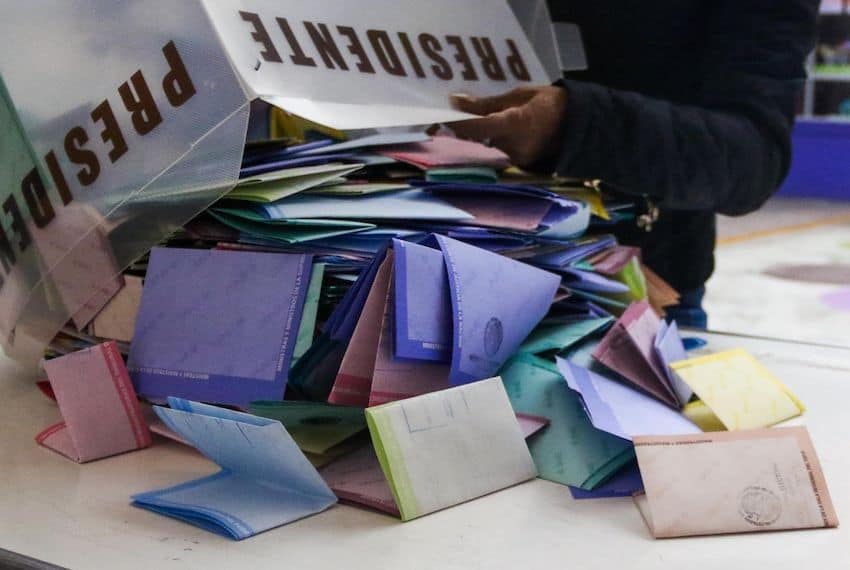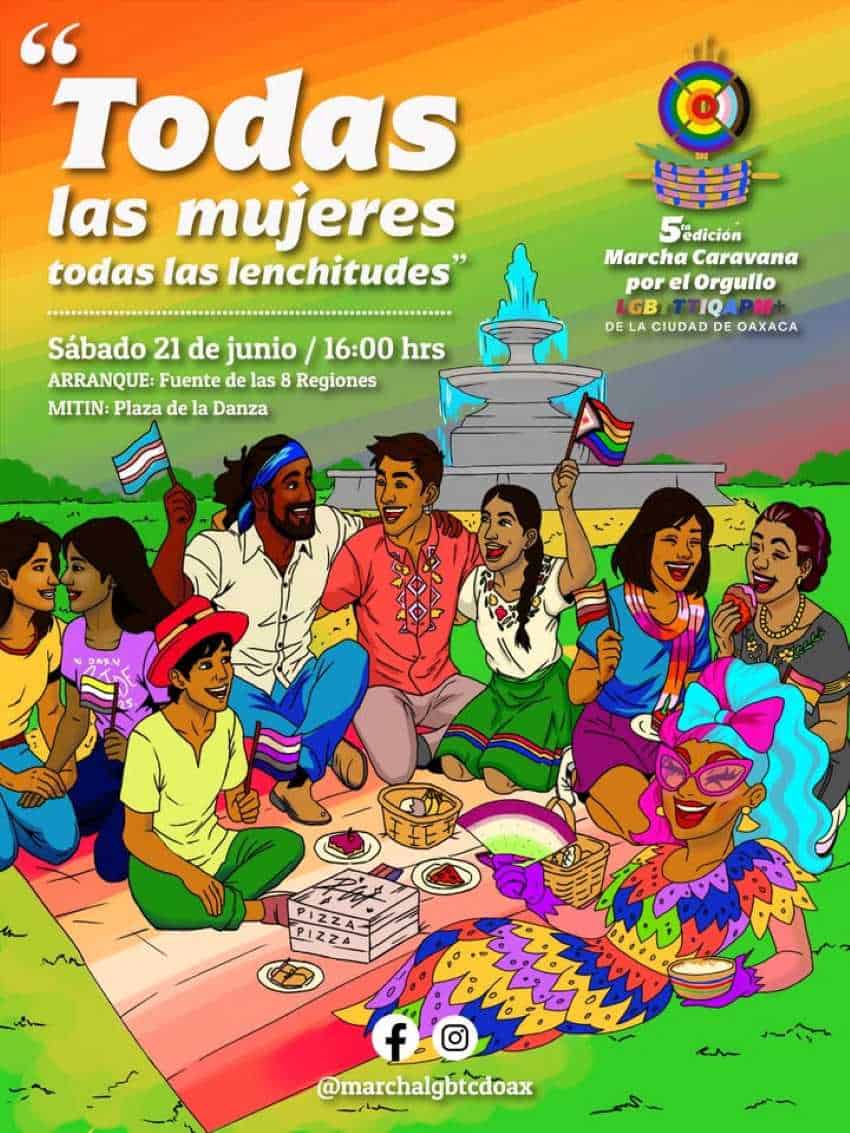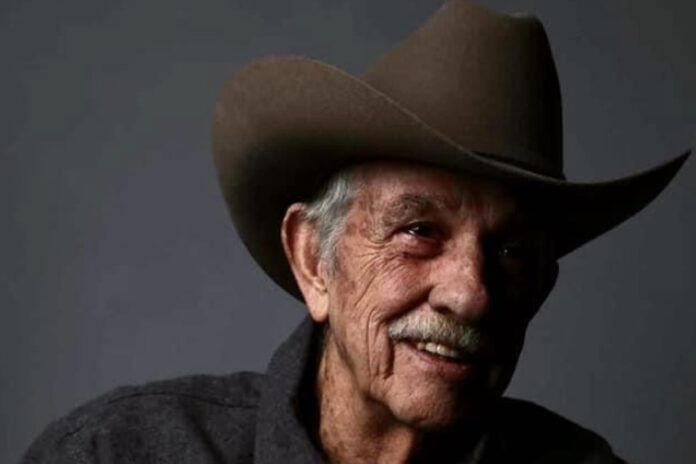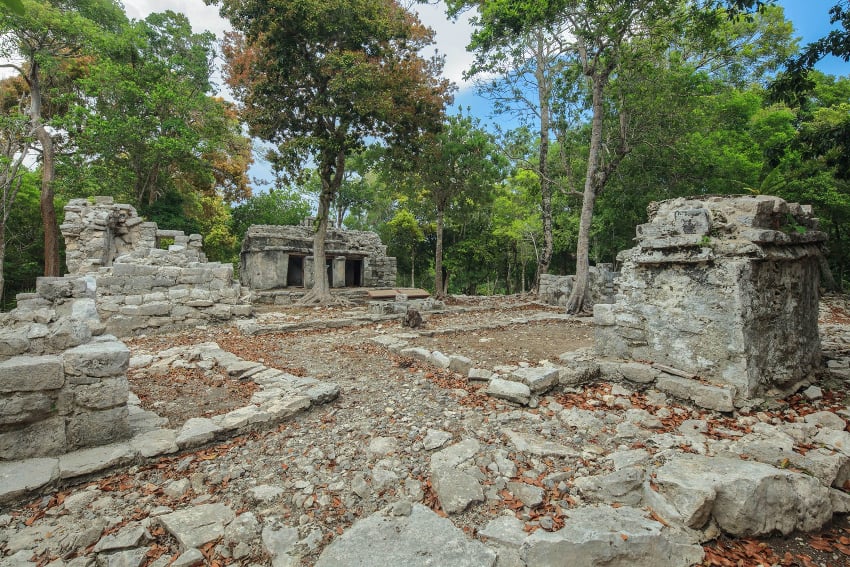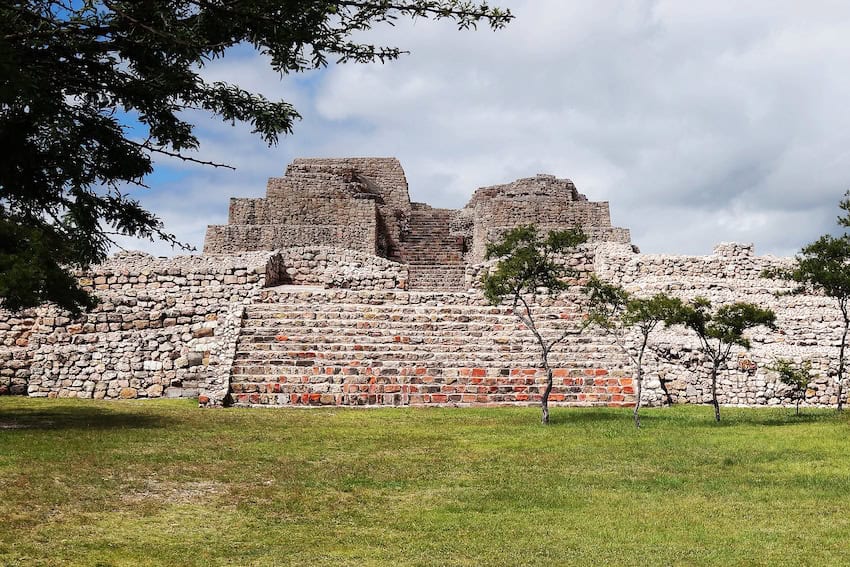At her Monday morning press conference, President Claudia Sheinbaum declared she was “happy” and “in a good mood” a day after millions of Mexicans went to the polls to vote for new judges, magistrates and Supreme Court justices.
Discussion of Mexico’s first-ever judicial elections — at which citizens were tasked with electing 881 federal judges and 1,801 local ones — dominated Sheinbaum’s mañanera, at which Interior Minister Rosa Icela Rodríguez and the president’s top legal adviser Ernestina Godoy also spoke.
Sheinbaum: Judicial election turnout was higher than number of people who voted for PAN or PRI last year
Early in her press conference, Sheinbaum noted that around 13 million people voted in the judicial elections, representing a turnout of approximately 13% of eligible voters.
The figure, she said, is “more than double” the number of people who voted in a 2021 referendum that asked citizens whether five ex-presidents should be investigated for crimes they might have committed while in office.
Sheinbaum displayed to reporters criticisms of the judicial elections by the leaders of the National Action Party (PAN) and Institutional Revolutionary Party (PRI), which together backed Xóchitl Gálvez at the 2024 presidential election.
PAN president Jorge Romero Herrera declared that “the supposed election of the #JudicialFraud lacks legitimacy and participation,” while PRI president Alejandro Moreno described the election as a “grotesque stunt” rather than a “democratic exercise.”
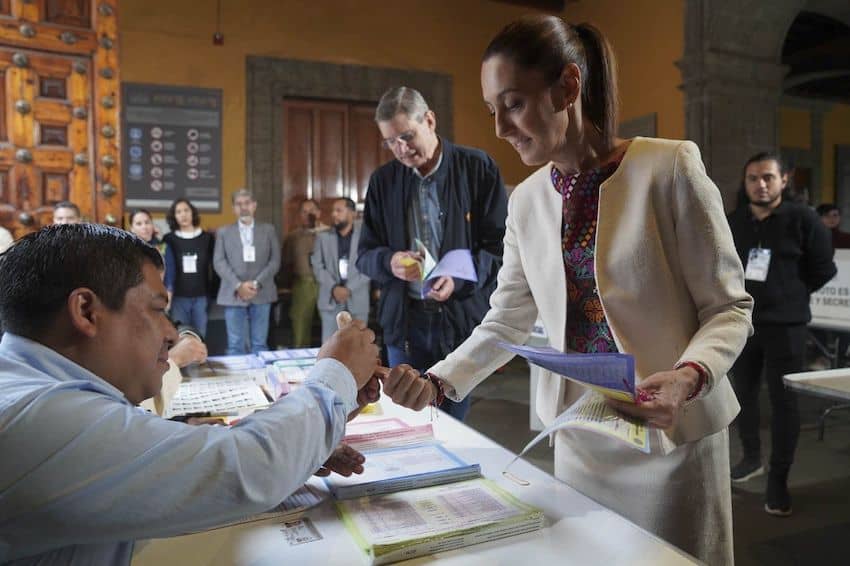
Sheinbaum — who argued the judicial elections were necessary to rid the judiciary of corruption — also displayed 2024 presidential election results that broke down voters’ preferences by party.
“How many people voted yesterday? Close to 13 million, a little more, it seems. Look at how many votes the PAN got in 2024 — 9.6 million. Look at how many votes the PRI got in 2024 — 5.7 million,” she said.
Sheinbaum highlighted that the number of votes each of the parties attracted in the presidential election — which she won in a landslide a year ago this Monday — was lower than the turnout on Sunday.
“No wonder they’re a bit worried,” she said.
“… They say that very few people participated, but it turns our that those who participated are greater [in number] than those who gave their vote to them a year ago,” Sheinbaum said.
“… Unprecedented, amazing, marvelous, democratic,” she said of the judicial elections.
“They bet that no one was going to go out and vote. Well, more people voted that those who vote for them,” Sheinbaum said.
Sheinbaum ‘happy’ to see AMLO, who voted in Palenque
“We were very pleased to see him,” Sheinbaum said when asked about the “reappearance” of former president Andrés Manuel López Obrador, who voted on Sunday in Palenque, Chiapas, where he now lives.
“We didn’t know he was going to come out to vote,” she added.
Sheinbaum thanked López Obrador, who described her as “the best president in the world,” saying that “his words” were “very touching.”
“… He came out to exercise his right to vote and announced that his book is coming. So very good, I’m happy to see him. He looks very good — very, very good,” she said.
“… I saw that the people were very happy to see him,” Sheinbaum added.
AMLO breaks public absence to cast ballot in historic judicial vote
President concedes elections could be improved
A reporter asked the president what could be done to improve the electoral process ahead of another round of judicial elections in 2027. She also asked about voters’ use of “cheat sheets,” known in Mexico as acordeones (accordions) because of the way they fold up in a way similar to the musical instruments.
“Everything is perfectible,” Sheinbaum said.
“In addition, we have to remember that the National Electoral Institute [INE], and the [Electoral] Tribunal itself, said that notes could be taken [with you] when you go to vote because there were a lot of ballots,” she said.
One of many criticisms of the elections was that it was extremely difficult for citizens to vote in an informed way because there were close to 8,000 candidates competing in different races.
Sheinbaum noted that it was the first time that Mexico held judicial elections before stressing again that “everything is perfectible.”
“Conclusions will be drawn in order to improve for 2027, but it was a great exercise and a lot of people participated,” she said.
“… The INE will have to carry out its review for the next judicial election,” Sheinbaum said.
‘Justice is also a matter for the people’
During her remarks, Interior Minister Rodríguez said that Mexico, by holding judicial elections, sent a “clear” message to the world.
That message, she said, is that “justice is also a matter for the people.”
“As President Claudia Sheinbaum has said, what we want is for all of us to have the same access to justice: the rich person, the poor person, the person who lives in the north, the person who lives in the south,” Rodríguez said.
For her part, Godoy said that “the main actor” of election day on Sunday was “the people of Mexico.”
The legal adviser congratulated polling station officials, acknowledging the work they did to make “this historic and unprecedented electoral process” possible.
By Mexico News Daily chief staff writer Peter Davies ([email protected])
